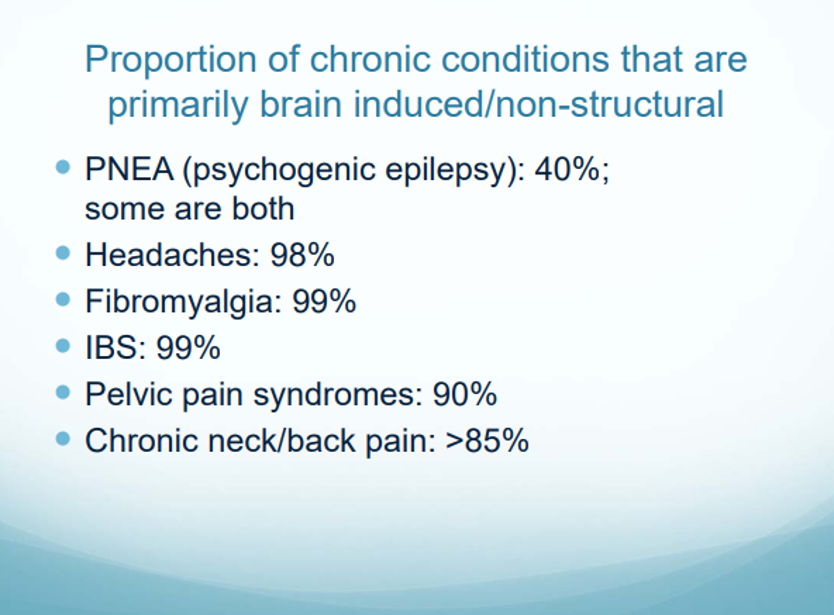Revisiting the mind-body connection to curb the chronic pain pandemic.
Currently, about 21% of the global population is suffering from chronic pain¹, this means 1 in 5 people. The first time I heard this number I thought it had to be an exaggeration, it cannot be that so many people are walking around with pain on a daily basis. But the more I looked into it, even on a country by country level, the more I was confronted with the numbers and found that it is indeed accurate. In some countries the numbers are even higher. For instance, in the US, it is said to be as high as 30.6%¹ of the population, and also in the UK this number is above the average, at 23%², according to the UK’s National Institute for Health and Care Excellence (NICE).
How are we to understand that in our modern world, at the pinnacle of medical ingenuity and sophistication, we are seeing more and more chronic physical disease […]? This sentence comes from the first pages of the book The Myth of Normal (2022), by Dr. Gabor Maté co-written with his son Daniel Maté, and they pose an excellent question. How is this possible? The book covers various angles when it comes to our ailing society and how we got here, but I want to focus on just one angle: the mind-body connection. Or I should say disconnection.
You might wonder; why is this disconnection important, and what has it to do with chronic pain? When was the last time a medical professional has asked you ‘How are you feeling emotionally?’, or ‘How would you rate your current stress levels?’? As trivial as this question seems, especially when dealing with physical pain, in a majority of chronic conditions this is more significant than we believe. As Dr. Howard Schubiner highlighted in his presentation for OptumHealth Education (OHE), many chronic pain conditions – from headaches, fibromyalgia, IBS, pelvic pain, to chronic back and neck pain – have been proven to be primarily brain induced³ ⁴.

What this shows is that our brains have more to do with what we feel in our body than modern medicine likes to admit. Schubiner isn’t alone in trying to highlight this connection. As Dr. Rachel Zoffness points out even more boldly: “Pain is both physical AND emotional 100% of the time”⁵. There are no exceptions. These are recent examples, that are backed by neuroscience yet, there is case-based research dating back to the 1980s, where the late Dr. John E. Sarno started seeing this same trend among his patients. He noticed that most of the chronic pain could be healed from a psychological approach⁶. His methods were criticised by the medical community and didn’t get widely adopted, but his success can be measured by the lives he changed, which is hard to ignore when reading the messages on the website, created in his name, by people who recovered thanks to his mind-body approach.
Nowadays, it is easier to measure the mind-body connection thanks to modern day’s brain scans that can show you exactly what part of the brain is triggered when dealing with different impulses or different forms of pain. But even with recent neuroscience backed research, the mind-body approach is still not widely adopted. Modern day healthcare providers are not taught to ask a patient how they are doing emotionally, how their stress levels are, generally there isn’t time to get into that with a patient, and these questions are rather left to psychologists. It isn’t a shortcoming of any specific individual, it is a system that has developed to become so hyper focused on pathology, and the separation of mind and body, that we forget to zoom out and look at humans for the complex beings that they are.
We need to start taking a more holistic approach to chronic pain, and healthcare in general, instead of labelling holistic as ‘alternative’ or woo-woo. Ironically, there is nothing new-age or alternative about the idea of the mind and body being connected. The idea that they should be seen as separate is an invention of the last century. So let us zoom out together, to reopen the path to health for chronic pain suffers. Asking these questions could be the first step in getting to the source of the pain.
6 concrete tips for chronic pain sufferers
What are some things you can do if you are suffering from chronic pain, and what you have tried so far hasn’t really worked for you? Here are some concrete tips:
- See if you can find out what your body is trying to tell you. Pain is a messenger, it isn’t random, it is your body trying to tell you something. Instead of focusing on your pain as the enemy, try to see it as a way of your body trying to communicate with you. Try to get to know it, to see what is going on beneath it.
- Focusing on something that brings you joy will calm down your central nervous system, letting it know you are SAFE. When it knows it is safe, that you are safe, there is no need for the pain signals
- Focus on your daily wins, your accomplishments, NO MATTER how small. If you take note of them every day this will become easier. Refocusing on what goes well will strengthen those neural pathways overtime, making it easier for your brain to take this route.
- Pacing into activities that you would like to pick back up, slowly and safely, can teach your brain it is actually safe to do this activity. The challenge here is to go slow so you can gain back the confidence in your body
- Have patience and compassion for yourself. Recovery is possible but takes time, and relapses are part of the journey. The most important thing is to not stress yourself into healing but to take small steps and show yourself compassion during setbacks.
- There are more and more practitioners specialised in chronic pain, using a mind-body approach, that can help you on your journey. If you think you can benefit from a personalised approach, look for certified professionals in this field who can look at your case from a holistic perspective and set up a safe plan together with you.
Sources
1. https://paindoctor.com/chronic-pain-statistics-2021/
2. https://cks.nice.org.uk/topics/chronic-pain/background-information/prevalence/
3. https://www.optumhealtheducation.com/sites/default/files/191205-Chronic-Pain-Schubiner-Slides.pdf
5. https://findingmastery.net/rachel-zoffness/
6. https://www.nytimes.com/2017/06/23/science/john-sarno-dead-healing-back-pain-doctor.html




